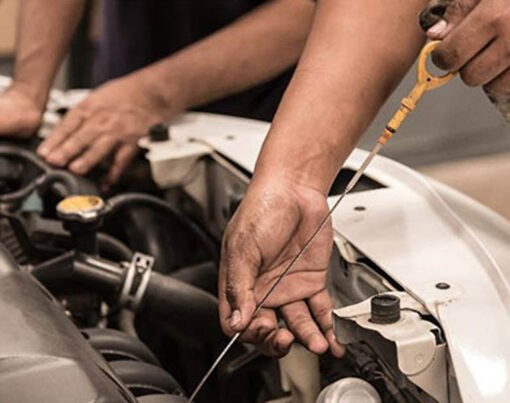Rapid prototyping is a crucial process in the automotive industry that allows manufacturers to quickly develop and test new designs before mass production. In recent years, 3D printing technology has revolutionized the field of rapid prototyping, enabling automotive companies to reduce costs, improve efficiency, and accelerate the overall development process. This article explores some of the significant advancements in 3D printing for automotive rapid prototyping.
Table of Contents
Why Choose 3D Printing for Automotive Prototyping
In today’s fast-paced world, businesses and individuals often require quick turnaround times for their 3D printing needs. Fast 3D printing service have emerged to meet this demand, providing rapid and efficient production of prototypes, models, and functional parts.
With advanced technologies and optimized workflows, this techniquecan deliver high-quality prints in record time. These services employ cutting-edge 3D printers that utilize fast printing techniques such as high-speed resin curing or large-format printing. By leveraging these technologies, they can significantly reduce production times while maintaining the integrity and accuracy of the printed objects.
3D printing are especially beneficial for time-sensitive projects, urgent prototypes, or last-minute design iterations.
Benefits of 3D Printing for Automotive Rapid Prototyping
Whether it’s a small-scale model or a complex functional part, these services can provide quick and reliable solutions, helping businesses and individuals save valuable time and meet tight deadlines.
Moreover, 3D printing often offer streamlined ordering processes, online file submission, and efficient logistics to ensure a seamless experience. With their expertise in rapid prototyping and efficient production, these services have become invaluable partners for those seeking speedy and reliable 3D printing solutions.
1. Enhanced Materials
One of the key advancements in 3D printing for automotive rapid prototyping is the development of advanced materials specifically tailored for automotive applications. Traditional prototyping methods often require multiple iterations and different materials to replicate various parts. With 3D printing, manufacturers can now choose from a wide range of materials, including high-performance polymers, metal alloys, and even carbon fiber composites. These materials offer improved strength, durability, and thermal resistance, making them suitable for functional prototypes and even end-use parts.
2. Large-Scale Printing
In the past, 3D printers had limitations in terms of the size of objects they could produce. However, recent advancements have enabled the development of large-scale 3D printers capable of fabricating full-scale automotive prototypes. This breakthrough allows automotive designers and engineers to create accurate representations of their designs, providing a more realistic testing environment. Large-scale printing also eliminates the need for the assembly of multiple smaller components, saving time and effort during the prototyping process.
3. Multi-Material Printing
Another significant advancement in 3D printing for automotive rapid prototyping is the ability to print objects with multiple materials simultaneously. This development opens up new possibilities for creating complex prototypes with varying textures, colors, and mechanical properties. For example, a single 3D-printed component can now include both rigid and flexible sections, simulating different parts of a vehicle. Multi-material printing enhances the functionality and realism of automotive prototypes, enabling more comprehensive testing and evaluation.
4. Functional Prototypes
Traditionally, prototyping involved creating physical models solely for visual representation and fit testing. However, with 3D printing, it is now possible to produce functional prototypes that closely mimic the performance of the final product. Advanced 3D printers can incorporate moving parts, intricate geometries, and even electronics into the prototypes. This capability allows automotive engineers to assess the functional aspects of a design, such as airflow, fluid dynamics, and mechanical interactions, at an early stage, leading to faster and more accurate refinement of the final product.
5. On-Demand Manufacturing
Beyond rapid prototyping, 3D printing is also enabling on-demand manufacturing in the automotive industry. With the advancements in additive manufacturing technologies, automotive companies can now produce low-volume, specialized components economically. This flexibility has numerous benefits, including reduced inventory costs, improved supply chain management, and the ability to customize parts for specific vehicles or customer requirements. On-demand manufacturing using 3D printing has the potential to transform the automotive industry by reducing production lead times and offering more personalized products.
Prototyping plays a crucial role in the prototyping for automotive industry. It allows manufacturers to test and refine their designs before moving to mass production. By creating physical prototypes, automotive companies can evaluate the functionality, performance, and aesthetics of their vehicles or components. Prototyping enables engineers to identify and address potential issues early in the development process, resulting in improved safety, efficiency, and customer satisfaction.
With advancements in technologies like 3D printing, prototyping for automotive industry has become faster, more cost-effective, and highly accurate, leading to accelerated innovation and reduced time-to-market for new vehicles and components.
Conclusion
The advancements in 3D printing technology have revolutionized automotive rapid prototyping. With enhanced materials, large-scale printing, multi-material capabilities, functional prototypes, and on-demand manufacturing, 3D printing offers automotive manufacturers numerous benefits in terms of cost savings, efficiency improvements, and accelerated development cycles.
These advancements have enabled designers and engineers to create more realistic prototypes, assess functional aspects earlier in the design process, and even produce low-volume parts economically. As 3D printing technology continues to evolve, it is expected to play an increasingly vital role in the prototyping for automotive industry, transforming how vehicles are designed, developed, and manufactured.










